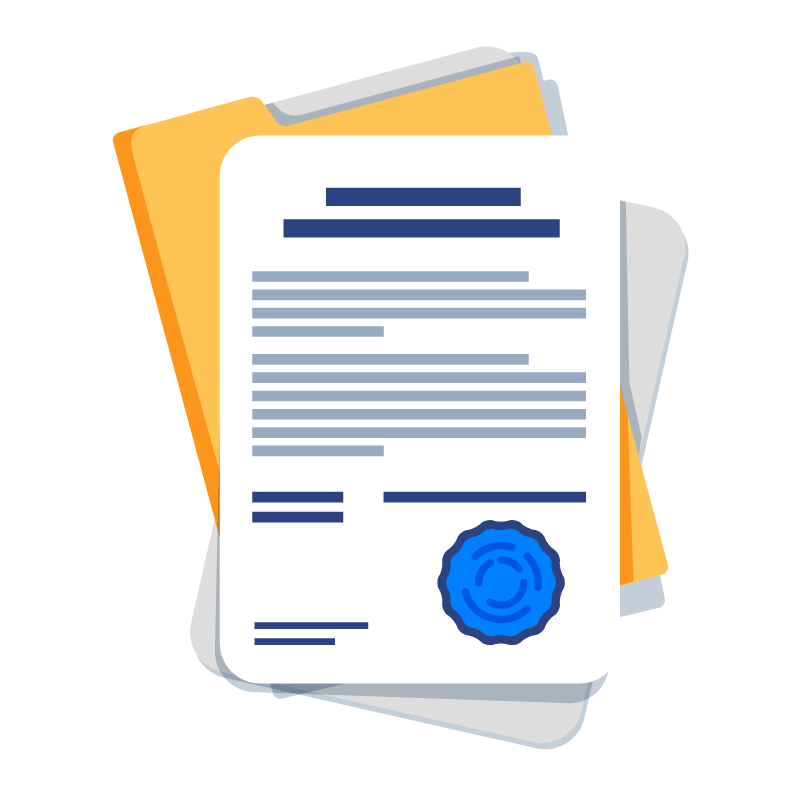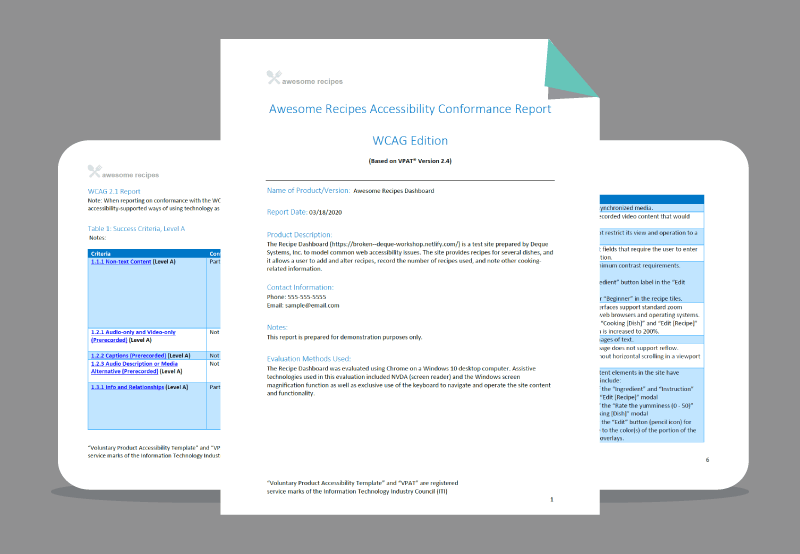Understanding Your VPAT (Voluntary Product Accessibility Template)
Your VPAT helps the world understand how accessible your product or service is for people with disabilities.
What is a VPAT?
VPAT stands for “Voluntary Product Accessibility Template.” This template is used to draft your Accessibility Conformance Report (ACR). Your ACR clearly states which accessibility standards your product or service meets, and it warns users about any “accessibility blockers” they may encounter.
Technically, the Voluntary Product Accessibility Template (VPAT) is just that: a generic document template. Companies use this template as a guide when drafting their products’ ACR (Accessibility Conformance Report). People tend to use the term “VPAT” to refer to both that generic template and their own specific VPAT-based ACR. For clarity, we’ll do likewise.
Think of a VPAT as a sort of “Nutrition Facts” label for your website, app, or other digital product/service. Checking the Nutrition Facts label gives you a sense of the impact a given snack will have on your body. Checking the VPAT gives your potential customers a sense of the impact your product or service might have on people with disabilities.

Why Do We Need a VPAT?

Section 508 of the Rehabilitation Act requires that U.S. Federal government agencies ensure that any information and communications technology (ICT) they develop, procure, maintain, or use meets certain accessibility standards. Twenty years ago the Information Technology Industry Council (ITI) and the U.S. General Services Administration (GSA) created the VPAT specifically so that vendors could easily furnish that supporting documentation. Since 2017, the template has been based on the Web Content Accessibility Guidelines (WCAG), an existing open standard maintained by the W3C (World Wide Web Consortium). In addition to WCAG, the VPAT may include information on a product’s conformance to the Section 508 standard or the European Union’s EN 301 549 standard. Whichever standard you choose, the purpose of the VPAT remains the same: documenting the accessibility of a “digital property.”
But this isn’t just about ticking a box on a government form. Plenty of organizations want or need any product they use to be accessible to everyone. For them, looking at your VPAT gives them a quick way to compare the accessibility of your product or service with similar offerings from other vendors, and determine which is best for them.
Improving Your Product via VPAT
At its heart, this is an exercise in transparency, consistency, and accuracy. Creating a VPAT that accurately represents how accessible your product, service, website, or other digital property is doesn’t just benefit potential consumers—it is also a tool for finding those places where your current offering may be falling short.
The first broad web accessibility guidelines were published 20 years ago. Nonetheless, as of 2019 99 percent of the most-used websites still failed to meet those guidelines. Increasingly, individuals who rely on assistive technology (and the groups who represent their interests) have been forced to seek legal remedy in order to create change. Such cases rose 50-fold from 2000 to 2015, and then increased another 50-fold between 2015 and 2018.
In our experience, the accessibility audit is itself so eye-opening that it almost inevitably leads to a better product: websites that are easier to navigate via screen reader are also easier for search engines to understand, increasing web traffic. A dev team that’s been made aware of the intricacies of accessibility grows more sensitive to user experience overall. That doesn’t just lead to a digital product or service that’s easier to use for people with visual impairments—it’s easier to use for everyone.
How Do I Get My VPAT?
Anyone can write a VPAT —there’s no requirement that you hire an impartial third-party to audit your site or produce your report. In fact, you and your team are welcome to model your VPAT after this sample (PDF). But unless your product development team already includes a dedicated accessibility specialist, it’s unlikely you have sufficient in-house accessibility domain knowledge or WCAG/Section 508 testing capacity to do the best possible job. An incomplete or inaccurate VPAT can create liabilities or lose you business by failing to accurately reflect how accessible your digital property truly is.
Contact us to discuss the best way to approach digital accessibility in your organization.
